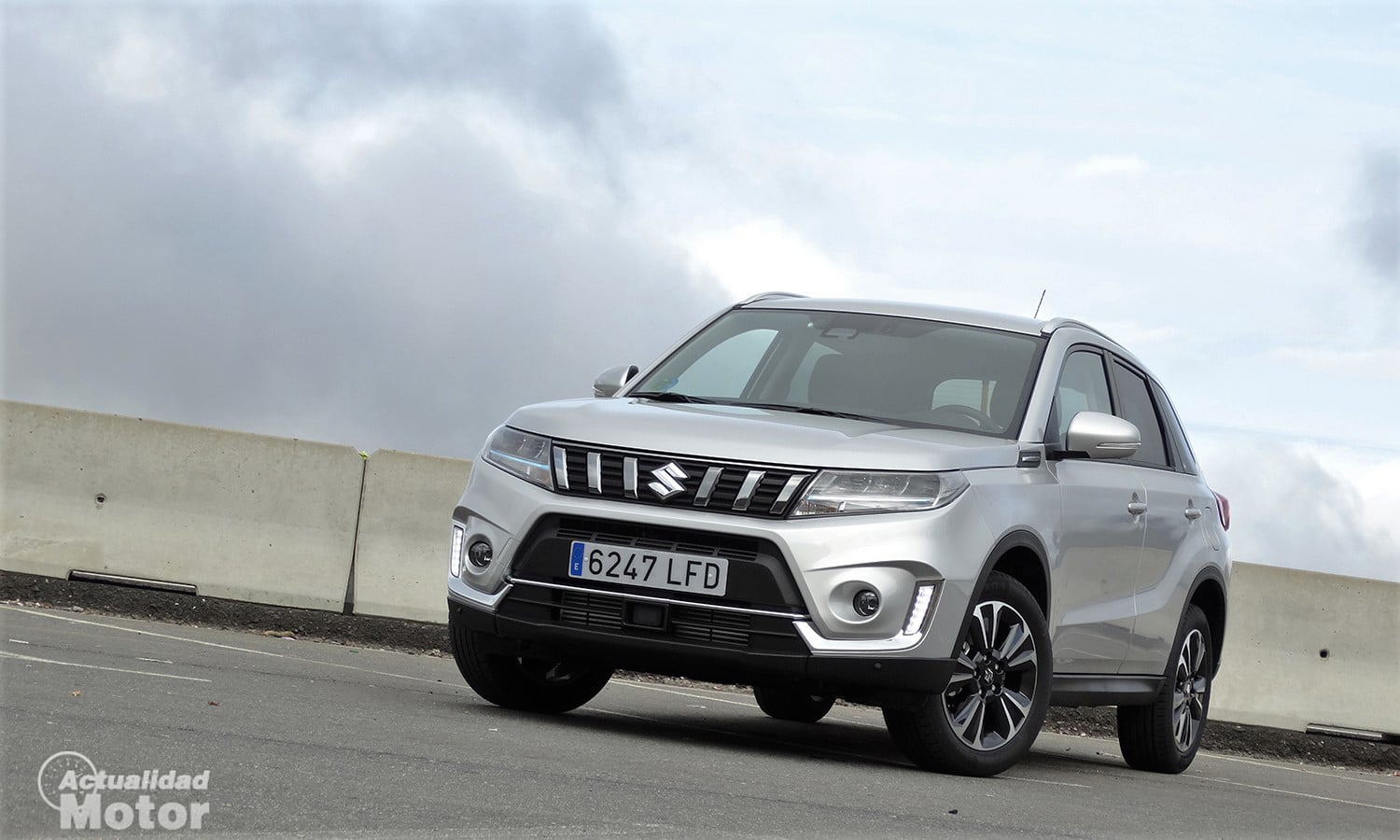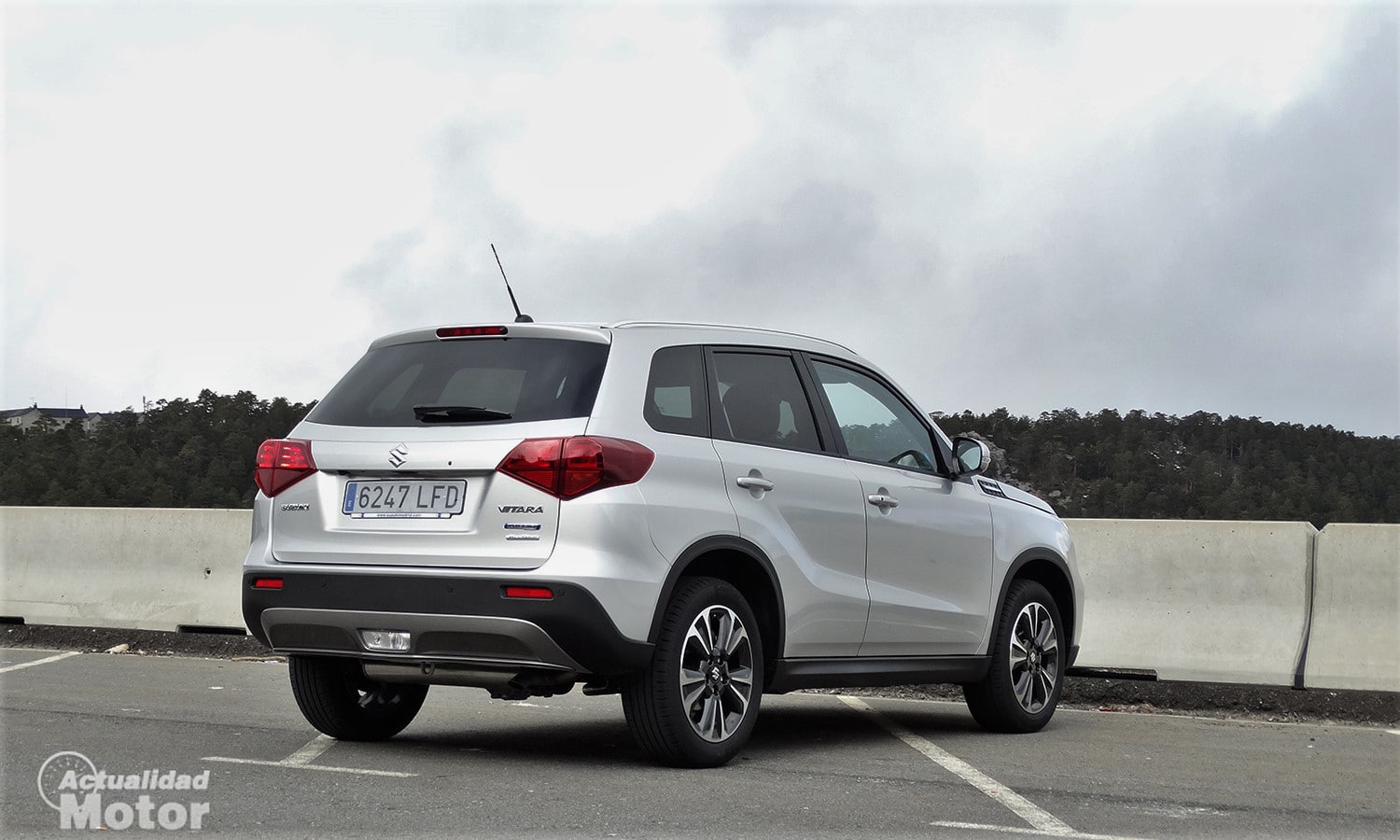El Suzuki Vitara It is one of the longest-lived models on the utility SUV market. Its beginnings are ahead of the current SUV fashion that began in the early 2.000s. The Vitara has been on sale since 1988, although over time, the model has been deviating more from the countryside to focus on more asphalt environments such as the city.
We have tested this car:
Test Suzuki Vitara 2015, reintroducing the small SUVTest Suzuki Vitara 1.6 VVT 120 CV, interesting against all oddsTest Suzuki Vitara Hybrid 48V SHVS 1.4 Boosterjet 4WD AllGripSuzuki currently markets the fourth generation of this well-known model.. The last one went on sale in 2015, although it had previously been officially presented at the 2014 Paris Motor Show. Thanks to this important renovation, the Vitara undergoes a drastic change in design and mentality, as it abandons the strategy to sell two different bodies.
That fourth generation has been actualizada a mediados de 2024. Esta actualización es la que hoy podemos encontrar en los concesionarios. Although outwardly there are hardly any changes, there are interesting improvements in sections such as equipment and, above all, mechanics, going on to have versions with a different degree of electrification.
Technical characteristics of the Suzuki Vitara

With the launch of the fourth generation, the Suzuki Vitara moves even further away from the field, a place that leaves the small and capable Suzuki Jimny. This drastic change is largely due to a change in platform. The current generation uses the same architecture as the suzuki s-cross, although in a smaller format so as not to skip segments.
Due to its dimensions, the Vitara is perfectly placed in the B-SUV segment: 4,17 meters long, 1,77 meters wide and 1,61 meters high. To these levels so fair and ideal for urban environments, we must add a wheelbase of 2,5 meters. A battle that allows you to offer an approved cabin for a maximum of five passengers, although three rear occupants will suffer the consequences of such a small size.
As for your trunk, the Suzuki Vitara announces a minimum volume of 362 liters of capacity, expandable to 1.120 liters if the rear row of seats is folded down in its 60:40 ratio. The only version that reduces cargo capacity is the conventional hybrid model, 289 liters, due to the presence of a lithium-ion battery installed in the bottom of the trunk.
Mechanical range and gearboxes of the Suzuki Vitara

El cambio más significativo de la renovación sufrida por el Suzuki Vitara a finales de 2021, mantenido en 2024, se encuentra bajo el capó. Desde entonces the Japanese B-SUV enjoys a fully electrified range, including MHEV and HEV versions. It is the first model of the company to be a conventional hybrid without dependence on Toyota after the collaboration carried out on the models Suzuki Swift y Suzuki across.
Thanks to this, the Vitara always enjoys the advantageous ECO label of the DGT. The MHEV version is determined by a 1.4-liter gasoline engine that generates 129 horsepower and 235 Nm of torque. A 48-volt auxiliary electrical system is attached to it that allows it to reduce consumption. It is available in 4×2 or 4×4 drive versions with six-speed automatic or manual gearboxes.
The novelty comes from Vitara Strong Hybrid, thus called the conventional hybrid unit. In this case, it uses a 1.5-liter DUALJET gasoline engine that is anchored to an electric motor and a 3,4 kWh capacity lithium-ion battery. Shows a maximum power of 116 horsepower. Management is derived from an automatic gearbox that sends power to the front axle or to all four wheels.
Equipment of the Suzuki Vitara

From doors inside the Suzuki Vitara is shown as a model of medium-low quality. Hard plastic is mostly used to compose almost all of the interior, something that significantly reduces the sense of perceived quality. The quality touches are determined by details such as the leather steering wheel and lever, as well as upholstery that mixes conventional fabric with leather inserts.
In order to facilitate the purchase process, the range of equipment has been considerably reduced. Tan solo están disponibles dos acabados, denominados GLE y GLX, además de la versión especial 20 aniversario. With them, only the number of elements and the standard technology available are significantly altered, since there are no significant changes at an aesthetic level and much less mechanically, since all possible options are always available.
As far as equipment is concerned, the Suzuki Vitara is not the most complete of the B-SUVs currently on the market. Elements such as: LED headlights, keyless start, automatic climate control, parking camera, sunroof, connectivity for mobile devices, heated front seats, seven-inch touch screen navigation, and a complete team of driving assistants and Security elements.
The Suzuki Vitara in video
The Suzuki Vitara according to Euro NCAP
The Suzuki Vitara completed the European safety tests for the car, Euro NCAP, in 2015 obtaining the highest score, 5 stars out of 5 possible. En cuanto a seguridad específica, el Vitara logró un 89% y 85% en protección para ocupantes adultos e infantiles, mientras que la seguridad para los viandantes fue de un 76% y los sistemas de seguridad del vehículo lograron un 75%. Dichas valoraciones se mantienen vigentes en las unidades posteriores a 2024 al no producirse un cambio significativo en la estructura del vehículo.
The Suzuki Vitara of Km 0 and Second hand
Despite the long journey made by the Suzuki Vitara, there are not many units available in secondary sales channels. It has never been a car with great commercial success, and that in turn affects the Km 0 and second-hand markets. In them we can see a degree of devaluation considerably higher than that of its closest rivals, around 35%.
If we take a look at the second-hand market, we see that the cheapest units date from the first generation (1988 – 1998) with amounts close to 1.500 euros, generally with a three-door body and more than 200 thousand kilometers accumulated. In the Km 0 channel we see a multitude of options, some more modern with MHEV systems and others older with gasoline engines. The prices present interesting discounts with respect to new models.
Rivals of the Suzuki Vitara

It must be recognized that it is difficult to find models of the B-SUV segment with all-wheel drive systems. The Vitara is one of the few that has a 4WD team with several driving modes (Auto, Sport, Snow and Lock). That positions him as a different model, although his rivals do not make things easy for him. The best known are: Renault Captur, Nissan Juke, Citroen C3 Aircross, Peugeot 2008, Opel Mokka, SEAT Arona, Skoda Kamiq, Volkswagen T-Cross, KIA Sonic, Hyundai Kona, Ford Puma, FIAT 500X y Ssangyong Tivoli among others. Without a doubt, the most direct rival is the Dacia Duster, although its size is slightly larger.
Highlight
- off-road behavior
- ECO label
- basic equipment
To improve
- Interior finishes
- Limited mechanical range
- High price
Suzuki Vitara prices
The changes applied to the Vitara range have led to a considerable price increase. Currently, el precio de salida del Suzuki Vitara es de 24.014 euros, ofertas y promociones incluidas. Ese valor corresponde a una unidad MHEV con 129 caballos, tracción 2WD y acabado GLE. En el otro lado de la balanza encontramos al Vitara 1.5L Strong Hybrid de 116 caballos con tracción 4×4 y acabado GLX. Su precio de salida se sitúa en los 32.295 euros, ofertas incluidas.
Suzuki Vitara Photo Gallery
The content of the article adheres to our principles of editorial ethics. To report an error click here.

























